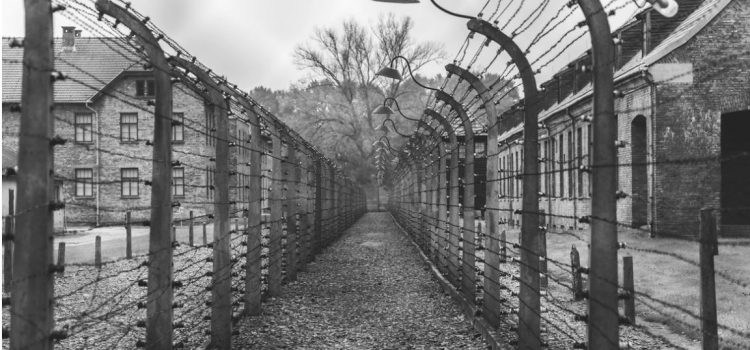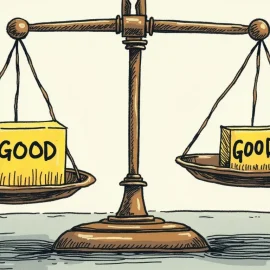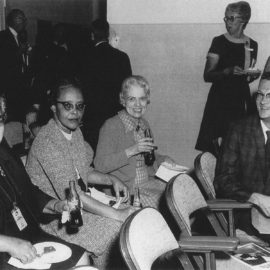

This article is an excerpt from the Shortform book guide to "Caste" by Isabel Wilkerson. Shortform has the world's best summaries and analyses of books you should be reading.
Like this article? Sign up for a free trial here .
How did the Nazi hierarchy of race and religion come to be? How was the Nazi social order similar to the caste system in America?
According to Isabel Wilkerson, the author of Caste, the Nazi hierarchy of race and religion was inspired by the caste system in America. Specifically, she argues, in designing their caste system, the Nazis took inspiration from the American eugenics movement.
Keep reading to learn more about the Nazi caste system and how it was developed.
The Nazi Caste System
According to Isabel Wilkerson, the author of Caste, the Nazi hierarchy was very similar to the American caste system—and those similarities were intentional. She argues that when creating their caste system (which was designed to separate the dominant Aryan caste from the subordinate caste consisting of Jewish people and other minorities), the Third Reich’s members were particularly influenced by the American eugenics movement: for instance, the Nazis adopted the term “subhuman” to describe the Jews, a term introduced by American eugenicists. Furthermore, prominent American eugenicist Madison Grant’s 1916 book, The Passing of the Great Race, influenced Adolf Hitler to the point that he wrote Grant a letter and called the book his Bible.
(Shortform note: This would not be the last time the Nazis took inspiration from the American eugenics movement. During the Nuremberg Trials after World War II, several Nazis on trial for war crimes (such as forced sterilization of Jewish people) defended themselves by citing Buck v. Bell, an American Supreme Court case that upheld a Virginia law allowing the state to forcibly sterilize people it deemed “genetically unfit for procreation.”)
In addition to eugenics, Wilkerson argues that Nazi leaders were fascinated with the legal system of discrimination in America and took a deep dive into American laws. According to Wilkerson, one young Nazi scholar who’d attended college in Arkansas detailed his astonishment with the lengths the Americans took to protect their dominant caste. He was particularly amazed by the regulations dictating who belonged to which caste: In America, anyone with even one drop of African blood was subordinate. (Shortform note: The Nazis weren’t the only oppressive regime to take inspiration from American racism to create their own caste systems. In Born a Crime, Trevor Noah describes how the politicians devising the South African apartheid system also studied American race relations for inspiration.)
As Wilkerson tells it, the Nazis actually felt the American one-drop law was too harsh. In the end, they adopted a hybrid law based on the laws of Texas and North Carolina, which stated that any person beyond simple classification as dominant or subordinate would be judged based on their associations. The resulting law defined a Jew as anyone who either 1) had three Jewish grandparents, or 2) had two Jewish grandparents and associated with Jews or practiced Judaism. Jews were stripped of their citizenship and prohibited from marrying or having intimate relations with Germans. (Shortform note: Wilkerson doesn’t mention that this law defined whether a person was Jewish based on their grandparents’ religious associations, regardless of whether those grandparents were ethnically Jewish. This shows that the Nazis thought Judaism itself (and not just ethnic Jewish heritage) was a polluting social force.)
| The Nazi Caste System Encompassed Other Groups Beyond Jewish People While Wilkerson primarily focuses on Jewish victims of the Nazi regime, there were several other groups who made up the lowest caste in the Nazi caste system. The Nazis imprisoned, tortured, and killed untold numbers of non-Jewish people, including Polish, Romani, and Black people; gay men; children and adults with disabilities; Christian clergy; and Jehovah’s Witnesses, among others. Historians debate how many non-Jewish victims died during the Holocaust, but the number is somewhere in the millions. |

———End of Preview———
Like what you just read? Read the rest of the world's best book summary and analysis of Isabel Wilkerson's "Caste" at Shortform .
Here's what you'll find in our full Caste summary :
- How a racial caste system exists in America today
- How caste systems around the world are detrimental to everyone
- How the infrastructure of the racial hierarchy can be traced back hundreds of years






